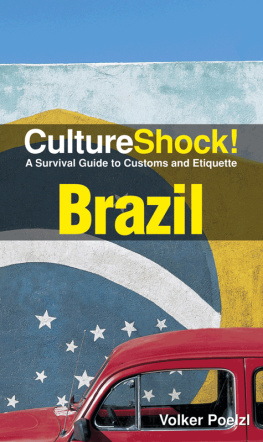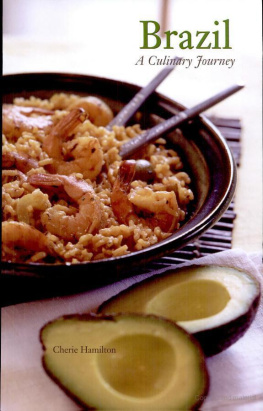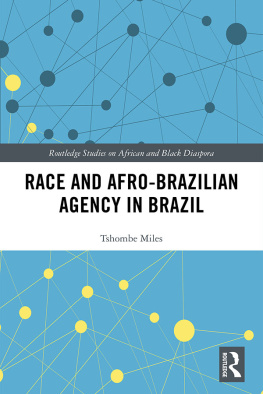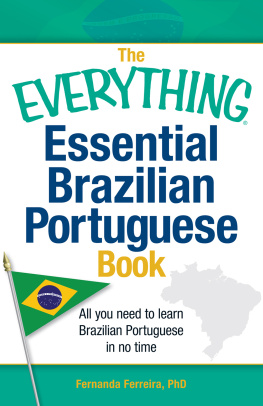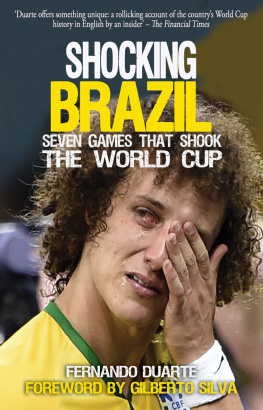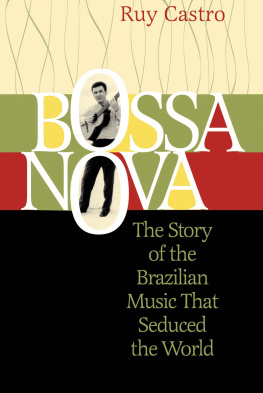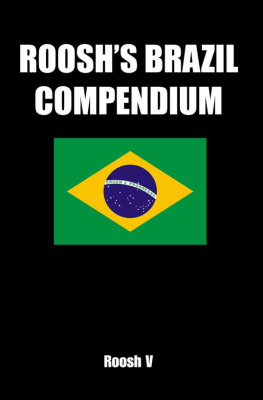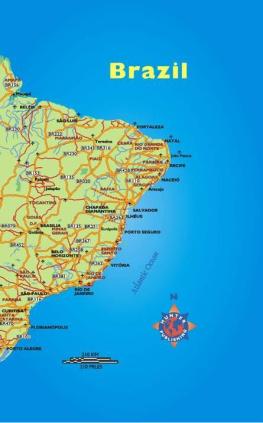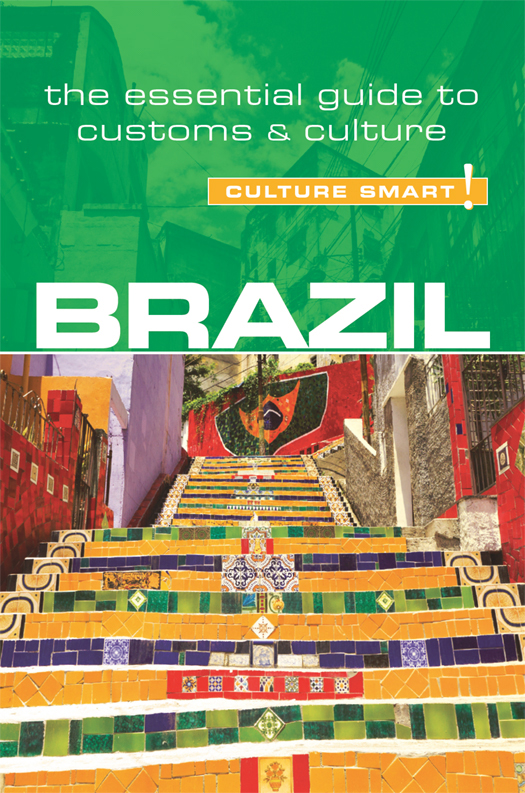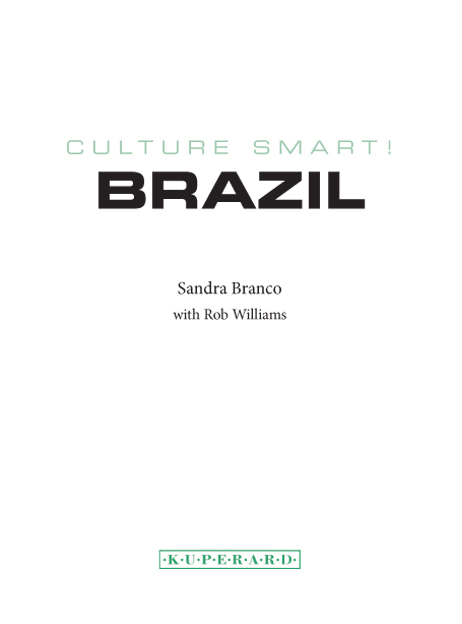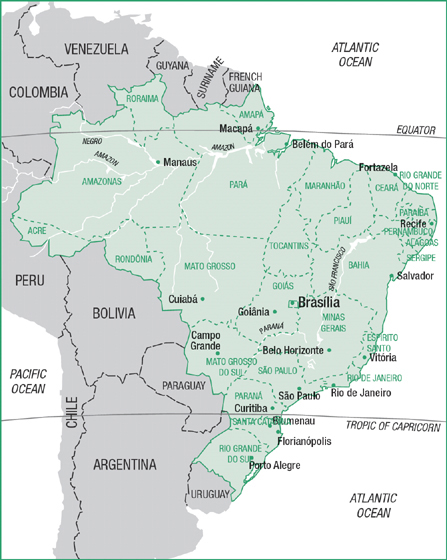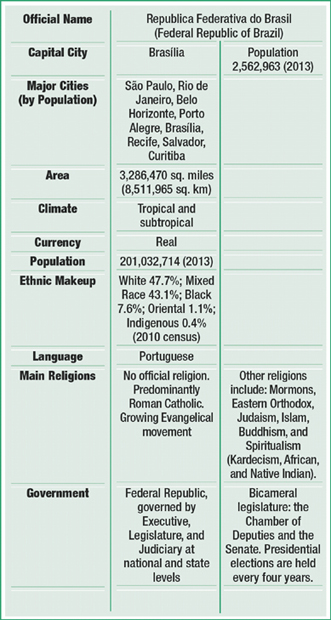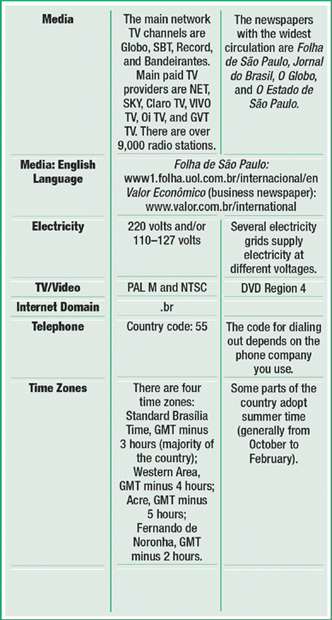ISBN 978 1 85733 689 4
This book is also available as an e-book: eISBN 978-1-85733-690-0
British Library Cataloguing in Publication Data
A CIP catalogue entry for this book is available from the
British Library
First published in Great Britain
by Kuperard, an imprint of Bravo Ltd
59 Hutton Grove, London N12 8DS
Tel: +44 (0) 20 8446 2440 Fax: +44 (0) 20 8446 2441
www.culturesmart.co.uk
Inquiries:
Series Editor Geoffrey Chesler
Design Bobby Birchall
Cover image: The famous steps in Rio de Janeiro covered in fragments of tiles, ceramics, and mirrors by the artist Jorge Selarn. iStock
The photographs on are reproduced by permission of the authors.
Images on the following pages reproduced under Creative Commons Attribution-Share Alike 3.0 Unported license:
v3.1
About the Authors
SANDRA BRANCO is a Brazilian-born writer now living in the UK. After graduating in Communications from So Paulo University she worked as a video and television producer and scriptwriter in So Paulo, Rio de Janeiro, Recife, Bahia, and Cear, before going on to gain an MA in Screenwriting at the Northern School of Film and Television in Leeds. She now lives and works in London.
ROB WILLIAMS is a principal lecturer in the Department of Modern Languages and Cultures at the University of Westminster in London, where he runs an MA program in International Liaison and Communication. He has lived and worked in France, Spain, Germany, the United States, China, and Brazil. He is also a consultant in intercultural communication.
The Culture Smart! series is continuing to expand. For further information and latest titles visit
www.culturesmart.co.uk
The publishers would like to thank CultureSmart!Consulting for its help in researching and developing the concept for this series.
CultureSmart!Consulting creates tailor-made seminars and consultancy programs to meet a wide range of corporate, public-sector, and individual needs. Whether delivering courses on multicultural team building in the USA, preparing Chinese engineers for a posting in Europe, training call-center staff in India, or raising the awareness of police forces to the needs of diverse ethnic communities, it provides essential, practical, and powerful skills worldwide to an increasingly international workforce.
For details, visit www.culturesmartconsulting.com
CultureSmart!Consulting and CultureSmart! guides have both contributed to and featured regularly in the weekly travel program Fast Track on BBC World TV.
contents
Map of Brazil
introduction
For many people Brazil conjures up images of football, Carnaval, and the finest coffee in the world. But the country is much more than beaches and bossa nova, although the sound of samba is an excellent starting point for exploring this vibrant, captivating, and infinitely complex land.
Brazil is at once stunningly beautiful and delightfully disorganized. Even though it is one of the ten largest economies in the world, poverty exists side by side with spectacular wealth. As part of the New World, it is open to new ideas, new technologies, and newcomers. Youthful and fast moving, it can overwhelm you with its sheer size, or the warmth and spontaneity of its people, while its street children and shantytowns can be quite unsettling.
The fundamental concept to understand is that there is not one but several Brazils, not only because of its varied geography and racial mix, but also in time: sixteenth-century ways coexist with twenty-first century lifestyles. Brazil is home to the so-called lung of the world, the Amazon forest, and its incredible biodiversity. It also comes with its fair share of regional differences. It is a true melting pot of races and culturesthe Brazilians are a colorful mixture of native indigenous people, black former slaves, white Europeans, and Asian and Middle Eastern immigrants. Despite this, there is a strong sense of national identity.
Brazil is the biggest country in South America and the fifth largest in the world. It builds satellites, exports airplanes, has its own petroleum industry, and takes pride in its modern architecture, furniture, fashion, and picturesque colonial towns. It has four different time zones, a rain forest, an Atlantic forest, drylands, wetlands, flatlands, high mountains, skyscrapers, busy urban centers, and quite a few deserted beaches hidden away in the 4,655 miles (7,491 km) of coastline.
One cannot hope to do justice to such diversity in a single book, and some generalization is inevitable. Culture Smart! Brazil aims to help you discover this fascinating country for yourself. It introduces the Brazilian people, their values, customs, and traditions; how they go about their daily life and spend their leisure time; and the way they think and do business. It describes the historical circumstances and influences that have shaped Brazilian society. The focus is mainly, though not exclusively, on the middle classsince these are the people visitors are most likely to interact withso you will be eased into your first encounters with the Brazilians and their culture.
Key Facts
chapter one
LAND & PEOPLE
If you could choose only one word to describe Brazil, it would be diversity. The variety of landscape, climate, flora, fauna, racial types, and lifestyles is enormous.
Brazilians tend to think of their country as some sort of continent within South America. The reason may be that its land mass represents nearly half (47.3%) of the territory. Looking at the map, we can see that the entire east side of Brazil is coastline (Atlantic Ocean), while the west side borders almost all the other South American countries, except for Chile and Ecuador.
Since Brazil is mostly situated south of the equator, the seasons are the reverse of those in Europe and the USA. Officially, summer lasts from December 22 to March 21, fall from March 22 to June 21, winter from June 22 to September 21, and spring from September 22 to December 21. In parts of the country, however, notably the Amazon region, seasonal divisions are less clearly marked and tend to be classified as wet and dry.
Brazil has four time zones. Braslia time is the nations official standard, three hours behind Greenwich Mean Time (GMT), London.
The equator crosses the north of the country, near the city of Macap. The Tropic of Capricorn passes through the south, near the city of So Paulo. This means that most of the country is within the tropical zone and characterized by a hot and humid climate. However, tropical does not necessarily mean that every region is hot all year-round, nor that the countryside is filled with lush vegetation. Altitude, proximity to the sea, soil fertility, and prevailing winds and weather fronts all have an effect on the different regions of the country.



